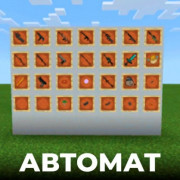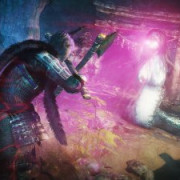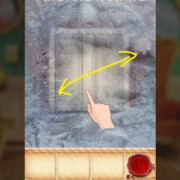Atum
Содержание:
Галерея
JOJO A-GO!GO!
Первое появление Atum
Atum и его владелец, Теленс Т. Д’Арби
Atum вблизи
Ловит удар Star Platinum
Создаёт куклу из души Какёина
Atum ищет ложь в душе Джотаро
Atum появляется в игре «Oh That’s A Baseball!!»
Первое появление Atum
Atum и его владелец, Теленс Т. Д’Арби
Atum вблизи
Ловит удар Star Platinum
Рука Atum ассимилируется в руку Джотаро
Из сопел Atum выходит дым
Создаёт куклу из души Какёина
Atum обыскивает душу Джотаро на ложь
Atum появляется в игре «Oh That’s A Baseball!!»
Силуэты Atum и Horus во втором опенинге
Характеристики Atum
Персонаж из игры «Oh! That’s Baseball», основанный в Atum в Heritage for the Future
Atum против Крестоносцев (JoJo’s Bizarre Adventure (SFC))
Atum в JoJo’s Pitter-Patter Pop!
Chara Heroes; Часть 3, Серия 3
Modern Influence
The remains of the ancient city of Heliopolis, the city of the sun, is located north of Cairo. The 120-ton obelisk of the Temple of Re-Atum still stands. The Egyptian name for obelisk is luna, which means pillar, and the city was once known as the city of the pillars. Luna were designed to catch the rays of the sun at dawn, representing the creation of Atum and the world from the original mound emerging from the waters.
Since this location was considered the place of the origins of creation, it became the main learning center in Egypt and priests congregated in Heliopolis to study religious history and philosophy.
The great Greek philosopher Plato, who may never have been to Egypt, used an image of the sun to represent the idea of a single god and creator of existence. A basic concept in the modern religions of today, the belief in one god that created the universe from a central place may have originated with the story of Atum, and the story of Ptah, his ancient competition, the creator god of Memphis.
Атум – рождённый из океана
В Древнем Египте каждый из городов имел своего покровителя, а крупные центры порой объединяли триады или семьи богов. Культ Атума был особенно распространён в Гелиополе, где и сохранилась большая часть сведений о боге. Мифы рассказывают, что Атум не был рождён другими божествами.
Этот бог сумел сотворить себя сам, появившись в первичном хаосе. В некоторых преданиях изначально сущностью Аума являлся первозданный океан Нун, из которого и возник этот бог. Не исключено, что именно поэтому некоторые источники называют Нуна отцом Атума, однако это не совсем верно.
Атум – бог демиург / Anatoly Fedorov / anatoly_fedorov.artstation.com
Нун был абстрактной стихией, не являясь персонифицированным божеством, и “родить” другое существо он не мог за счёт собственной энергии. Потому я склоняюсь к наиболее распространённой версии, что сам Атум был демиургом, то есть богом-творцом, создавшим мир и самого себя.
“Владыка Обеих Земель”, – именно так называли Атума, подразумевая, что он был покровителем Верхнего и Нижнего Египта. Если вы интересуетесь историей Древнего Египта, наверняка встречали подобное определение, используемое по отношению к фараонам. Атум являлся их защитником и покровителем.
Кроме того, египетские правители искренне верили, что являются земным воплощением бога, а порой утверждали, что в них соединяются черты различных могущественных божеств.
Статуя Хоремхеба, преклонившего колени перед богом Атумом. XVIII Династия, 1338 – 1308 г. до н.э.Местонахождение: Луксорский музей, Египет
Credits
New World Encyclopedia writers and editors rewrote and completed the Wikipedia article
in accordance with New World Encyclopedia standards. This article abides by terms of the Creative Commons CC-by-sa 3.0 License (CC-by-sa), which may be used and disseminated with proper attribution. Credit is due under the terms of this license that can reference both the New World Encyclopedia contributors and the selfless volunteer contributors of the Wikimedia Foundation. To cite this article click here for a list of acceptable citing formats.The history of earlier contributions by wikipedians is accessible to researchers here:
Atum history
The history of this article since it was imported to New World Encyclopedia:
History of «Atum»
Note: Some restrictions may apply to use of individual images which are separately licensed.
Who Is Atum?
Atum, also known as the great he-she, was the solar creator god of ancient Egypt. Self-created from Nu, the primordial waters, he embodied the essence and the capabilities of both sexes. The name Atum is derived from the word tem meaning complete – quite suitable, since he was able to create the first divine couple through masturbation. He made the goddess Tefnut and the god Shu this way, and they are the ancestors of all the other gods.
As the most ancient deity of Egypt, he was the first god in the Ennead of Heliopolis, the collection of nine deities, and although Heliopolis was the main cult center, he was worshipped throughout the land. Many pharaohs claimed to be descended from Atum so he is most often depicted wearing the crown of a king.
He features prominently in the religious inscriptions of ancient Egypt known as the Pyramid Texts which were carved on the walls of the pyramids during the period of the Old Kingdom.
Symbolic Influence
Atum was considered a sun god, which explains his affiliations with later gods. Ra was considered the primary sun god, Khepri was associated with the midday sun and Horus was a god of many titles, including the god of the east and the god of the rising and setting sun.
The first symbol used to represent Atum was a serpent, since he came from the water. But later depictions are more relevant to his association as the father of the pharaohs, and he wears a head cloth or a red crown similar to that of a king. The way to distinguish Atum from a pharaoh is by the shape of his beard. Occasionally, he appears in the form of another animal, symbolizing the end of the creative cycle when the animals were also given life.
Origin
At first there was nothing – just primordial water called Nu. A small hill of earth emerged from the water, and Atum created himself from it. The myths tell that he masturbated and then spit the god Shu and the goddess Tefnut from his mouth. The story explains his completeness as a creator, as well as the nickname the great he-she. Having both male and female qualities, he was able to create children without a female partner.
He was the first and most important god of the Ennead, although in later kingdoms, as the religion evolved, his name and qualities were combined with other gods: Atum-Ra, the sun god; Atum Khepri, the rising sun god; and Atum Horus, solar god and god of monarchs. Eventually, his prefix name was dropped, and each of the deities had their own name and identity. Atum was then considered the embodiment of all of them, and the father of the pharaohs.
The process of absorbing gods into one another and combining beliefs is called syncretism, and is an integral part of the Egyptian religion as it evolved through the kingdoms. Combining gods and worshipping them in different ways allowed polytheism to progress and remain over a long period of time under the rule of various pharaohs. Many of the pharaohs were titled “Son of Atum”, and he is represented in the rituals of the cults and especially during coronation ceremonies of the pharaohs.
The derivation of his name, the word tem, meaning complete or finisher, is an indicator of his completeness as a bisexual god and also of his ability to finish the creation of the world.
References
All Links Retrieved May 5, 2008.
- This article incorporates text from the Encyclopædia Britannica Eleventh Edition, a publication now in the public domain.
- Assmann, Jan. In search for God in ancient Egypt. Translated by David Lorton. Ithica: Cornell University Press, 2001. ISBN 0801487293
- Breasted, James Henry. Development of religion and thought in ancient Egypt. Philadelphia: University of Pennsylvania Press, 1986. ISBN 0812210454
- Budge, E. A. Wallis (translator). The Egyptian Book of the Dead. 1895. Accessed at sacred-texts.com
- Budge, E. A. Wallis (translator). The Egyptian Heaven and Hell. 1905. Accessed at sacred-texts.com
- Budge, E. A. Wallis. The gods of the Egyptians; or, Studies in Egyptian mythology. A Study in Two Volumes. New York: Dover Publications, 1969.
- Budge, E. A. Wallis (translator). Legends of the Gods: The Egyptian texts. 1912. Accessed at sacred-texts.com
- Budge, E. A. Wallis (translator). The Rosetta Stone. 1893, 1905. Accessed at sacred-texts.com
- Dennis, James Teackle (translator). The Burden of Isis. 1910. Accessed at sacred-texts.com
- Dunand, Françoise and Zivie-Coche, Christiane. Gods and men in Egypt: 3000 B.C.E. to 395 C.E.. Translated from the French by David Lorton. Ithaca, NY: Cornell University Press, 2004. ISBN 080144165X
- Erman, Adolf. A handbook of Egyptian religion. Translated by A. S. Griffith. London: Archibald Constable, 1907.
- Frankfort, Henri. Ancient Egyptian Religion. New York: Harper Torchbooks, 1961. ISBN 0061300772
- Griffith, F. Ll. and Thompson, Herbert (translators). The Leyden Papyrus. 1904. Accessed at sacred-texts.com
- Klotz, David. Adoration of the Ram: Five Hymns to Amun-Re from Hibis Temple. New Haven, 2006. ISBN 0974002526
- Larson, Martin A. The Story of Christian Origins. 1977. ISBN 0883310902
- Meeks, Dimitri and Meeks-Favard, Christine. Daily life of the Egyptian gods. Translated from the French by G.M. Goshgarian. Ithaca, NY: Cornell University Press, 1996. ISBN 0801431158
- Mercer, Samuel A. B. (translator). The Pyramid Texts. 1952. Accessed at sacred-texts.com
- Najovits, Simson. Egypt, Trunk of the Tree, Vol. 1: The Contexts. Algora Publishing, 2003. ISBN 0875862225
- Pinch, Geraldine. Handbook of Egyptian mythology. Santa Barbara, CA: ABC-CLIO, 2002. ISBN 1576072428
- Shafer, Byron E. (editor). Temples of ancient Egypt. Ithaca, NY: Cornell University Press, 1997. ISBN 0801433991
- Wilkinson, Richard H. The Complete Gods and Goddesses of Ancient Egypt. London: Thames and Hudson, 2003. ISBN 0500051208
Облик Атума
В легендах рассказывается, что из первородного хаоса Атум появился в виде змеи, однако на изображениях чаще всего он предстаёт в человеческом обличье. Часто его голову венчает двойная корона (такая же есть на изображениях известных фараонов).
Порой Атума древние художники представляли в облике старика. На мой взгляд, так они хотели показать значимость и давность почитания этого бога. Он действительно был одним из самых старших богов. «Тексты пирамид» рассказывают, что Атум появился из океана как первозданная гора.
Порой культ бога связывают с почитанием скарабея, поскольку сам Атум принимал обличье священного жука. На озере в Карнаке в честь Атума было создано изображение гигантского скарабея, что появляется из воды. Это практически в точности отражает сюжет предания, согласно которому бог в облике жука вышел из первичных вод Нуна.
Не менее интересными мне показались сведения о боге из «Книги мёртвых». Там Атум заявляет Осирису, что по завершению жизни нашего мира он разрушит его, чтобы создать новый. Миф рассказывает, что с концом нашей Вселенной всё вернётся к изначальному порядку. Когда наступит пора, Атум снова появится из хаотической стихии, чтобы построить новый мир и совершенно новую жизнь.
Бог Атум передает Анк – символ жизни, фараону Сесострису I, 1971 год до н.эМестонахождение: Белая часовня, Карнакский храм, Египет
Способности
Atum, как и Osiris, представляет собой довольно угрожающий стенд, из-за его способности красть души и читать мысли. Однако, его сдерживает чрезмерная зависимость Теленса на его силе. В следствии чего, его пользователь с легкостью одолён Джотаро и Джозефом.
Кража души
Подобно стенду своего брата, Osiris, основная способность Atum позволяет Теленсу красть души у того, кто признал свое поражение в игре, которую Теленс в основном использует в видеоиграх.
Как и у Osiris, жертва сначала должны поставить свои души, но Atum достаточно хитер, чтобы частично захватить душу у кого-то, застигнутого врасплох. В одном случае, он смог захватить душу Джотаро, не будучи в состоянии украсть её, когда Теленс правильно отгадал удар. В теории, Atum волен атаковать связанную часть тела, но этого никогда не показывали.
Украденные души помещаются внутрь специально сделанных кукол от самого Теленса, и он, тоже, волен рисковать и выпускать души под его контролем.
Чтение души
Atum читает душу Джотаро
Вторая способность Atum заключается в «чтении» души.
По сути, он психически задает душам ближайшего человека вопрос с ответами да или нет, на который душа обязана ответить, без ведома читаемого, позволяя тайно угадывать чье-то намерение.
Atum визуализирует человека, как через инфракрасный детектор, когда он читает души и если человек врёт, то цвет их ауры меняется, позволяя ему определить врёт он или нет. Когда Atum замечает «Yes», аура субъекта вспыхивает; если он замечает «No», аура субъекта направляется вертикально. Теленс также способен исследовать сразу несколько людей, хоть он и может забыть о них.
Отождествление с другими богами
Неслучайно имя Атума часто упоминается с именем другого великого божества, Ра. Как и верховный бог, Атум являлся прародителем всех бессмертных покровителей человечества, создателем мира, стражем мировых законов, хранителем гармонии. В некоторых сказаниях бог упоминается как Атум-Ра, ассоциировавшийся с закатным вечерним солнцем.
Интересно, что в различных городах Древнего Египта Атума отождествляли с разными божествами. Например, народ Мемфиса считал, что Атум – одно их воплощений Птаха.
Атум в воплощении Ра / Giorgio De Michele (Erebus) / erebus74.artstation.com
Иногда сравнивали его с Хепри, что был известен как “создатель Осириса”. В предании о боге Ра Атум показан главным судьёй на совете богов. Именно он вынес приговор людям, что замыслили свергнуть бога Ра. Исполнителем воли Атума стала богиня-львица Сехмет, что спустилась на землю и принялась уничтожать врагов бога.
В Фивах наравне с Атумом почитали Амона, что позднее стал одним и главнейших богов египетского пантеона. В Гермополе Атум отождествлялся с Тотом, что был могущественным покровителем древнего города. Центром культа Атума считался Гелиополь, однако и там со временем почитание Ра постепенно оттеснило бога-демиурга.
Бог Атум был во всём, что окружало египтян / Larry Springfield, Jr./ deejaystudios.artstation.com
Почему же почитание Атума отошло на второй план, а его культ затмило поклонение другим божествам? Мне кажется, причина этого кроется в древности и некой неопределённости образа бога-творца. Египтяне видели Атума не конкретной личностью мифологии, а силой света, солнца, первичного океана, которые давали жизнь. Позднее эти функции приняли на себя другие божества. Впрочем, сам Атум пусть и уступил первенство прочим бессмертным, но не остался забытым или покинутым.
На обложке: Атум – бог демиург древнего Египта / gukkhwa /gukkhwa.artstation.com
Atum in an Egyptian Context
| Atum in hieroglyphs | |||
|
As an Egyptian deity, Atum belonged to a religious, mythological and cosmological belief system that developed in the Nile river basin from earliest prehistory to around 525 B.C.E. Indeed, it was during this relatively late period in Egyptian cultural development, a time when they first felt their beliefs threatened by foreigners, that many of their myths, legends and religious beliefs were first recorded. The cults were generally fairly localized phenomena, with different deities having the place of honor in different communities. Yet, the Egyptian gods (unlike those in many other pantheons) were relatively ill-defined. As Frankfort notes, “If we compare two of … we find, not two personages, but two sets of functions and emblems. … The hymns and prayers addressed to these gods differ only in the epithets and attributes used. There is no hint that the hymns were addressed to individuals differing in character.” One reason for this was the undeniable fact that the Egyptian gods were seen as utterly immanent—they represented (and were continuous with) particular, discrete elements of the natural world. Thus, those Egyptian gods who did develop characters and mythologies were generally quite portable, as they could retain their discrete forms without interfering with the various cults already in practice elsewhere. Furthermore, this flexibility was what permitted the development of multipartite cults (i.e. the cult of Amun-Re, which unified the domains of Amun and Re), as the spheres of influence of these various deities were often complimentary.
The worldview engendered by ancient Egyptian religion was uniquely defined by the geographical and calendrical realities of its believers’ lives. The Egyptians viewed both history and cosmology as being well ordered, cyclical and dependable. As a result, all changes were interpreted as either inconsequential deviations from the cosmic plan or cyclical transformations required by it. The major result of this perspective, in terms of the religious imagination, was to reduce the relevance of the present, as the entirety of history (when conceived of cyclically) was defined during the creation of the cosmos. The only other aporia in such an understanding is death, which seems to present a radical break with continuity. To maintain the integrity of this worldview, an intricate system of practices and beliefs (including the extensive mythic geographies of the afterlife, texts providing moral guidance (for this life and the next) and rituals designed to facilitate the transportation into the afterlife) was developed, whose primary purpose was to emphasize the unending continuation of existence. Given these two cultural foci, it is understandable that the tales recorded within this mythological corpus tended to be either creation accounts or depictions of the world of the dead, with a particular focus on the relationship between the gods and their human constituents.
Notes
- Budge (1969), Vol. II, 87.
- This particular «cut-off» date has been chosen because it corresponds to the Persian conquest of the kingdom, which marks the end of its existence as a discrete and (relatively) circumscribed cultural sphere. Indeed, as this period also saw an influx of immigrants from Greece, it was also at this point that the Hellenization of Egyptian religion began. While some scholars suggest that even when «these beliefs became remodeled by contact with Greece, in essentials they remained what they had always been» (Erman, 203), it still seems reasonable to address these traditions, as far as is possible, within their own cultural milieu.
- The numerous inscriptions, stelae and papyri that resulted from this sudden stress on historical posterity provide much of the evidence used by modern archeologists and Egyptologists to approach the ancient Egyptian tradition (Pinch, 31-32).
- These local groupings often contained a particular number of deities and were often constructed around the incontestably primary character of a creator god (Meeks and Meeks-Favard, 34-37).
- Frankfort, 25-26.
- Zivie-Coche, 40-41; Frankfort, 23, 28-29.
- Frankfort, 20-21.
- Assmann, 73-80; Zivie-Coche, 65-67; Breasted argues that one source of this cyclical timeline was the dependable yearly fluctuations of the Nile (8, 22-24).
- Frankfort, 117-124; Zivie-Coche, 154-166.
- For instance, Wilkinson notes that he is «one of the eight or nine most frequently mentioned gods in the Pyramid Texts» (99).
- Wilkinson, 99; Zivie-Coche, 48, 55. See also: Retrieved August 16, 2007.
- Zivie-Coche, 54-55.
- Some sources argue that this second case of creation is actually a veiled reference to auto-fellatio. See, for example, Najovits, 104-105.
- Pyramid Texts 527 (1248a-1248d). Retrieved August 16, 2007.
- Pyramid Texts 600 (1652a-1653a). Retrieved August 16, 2007. This auto-creative process (coupled with the emergence of the primordial mound) is also described in Spell 80 B1C of the Coffin Texts (quoted in Zivie-Coche, 50-51).
- Wilkinson, 99.
- As Zivie-Coche notes, «he was the ‘father of fathers’ and the ‘mother of mothers,’ for it was from him that the rest of creation proceeded. … We should thus not be surprised that the creator could be bisexual, for male and female had not yet been differentiated. He is not, however, represented or depicted as androgynous in form. He was the unique and solitary one who issued forth from Nun before everything» (48).
- Pinch, 136, 152;
- Wilkinson, 99. The Book of the Dead verse alluded to above reads: «It hath been decreed that in me he shall see his likeness, and that (16) my face shall look upon the lord Tmu. How long then have I to live? It is decreed that thou shalt live for millions of millions of years, a life of millions of years. (17) May it be granted that I pass on unto the holy princes, for I am doing away with all that I did when this earth came into being from Nu (18), and when it sprang from the watery abyss even as it was in the days of old. I am Fate (?) and Osiris, and I have changed my form into the likeness of divers serpents (19).» From Budge’s translation, 342. Retrieved August 16, 2007.
- Wilkinson, 99-100.
- Pinch, 112.
- Pinch, 112; Wilkinson, 99-100.
- Pinch, 112; Wilkinson, 100.
- Wilkinson, 100.
- Frankfort, 52-53.
- Pinch, 111.
- Pyramid Texts 599 (1645a-1648b). Retrieved May 5, 2008.
- Wilkinson, 100-101; Pinch, 111-112.








